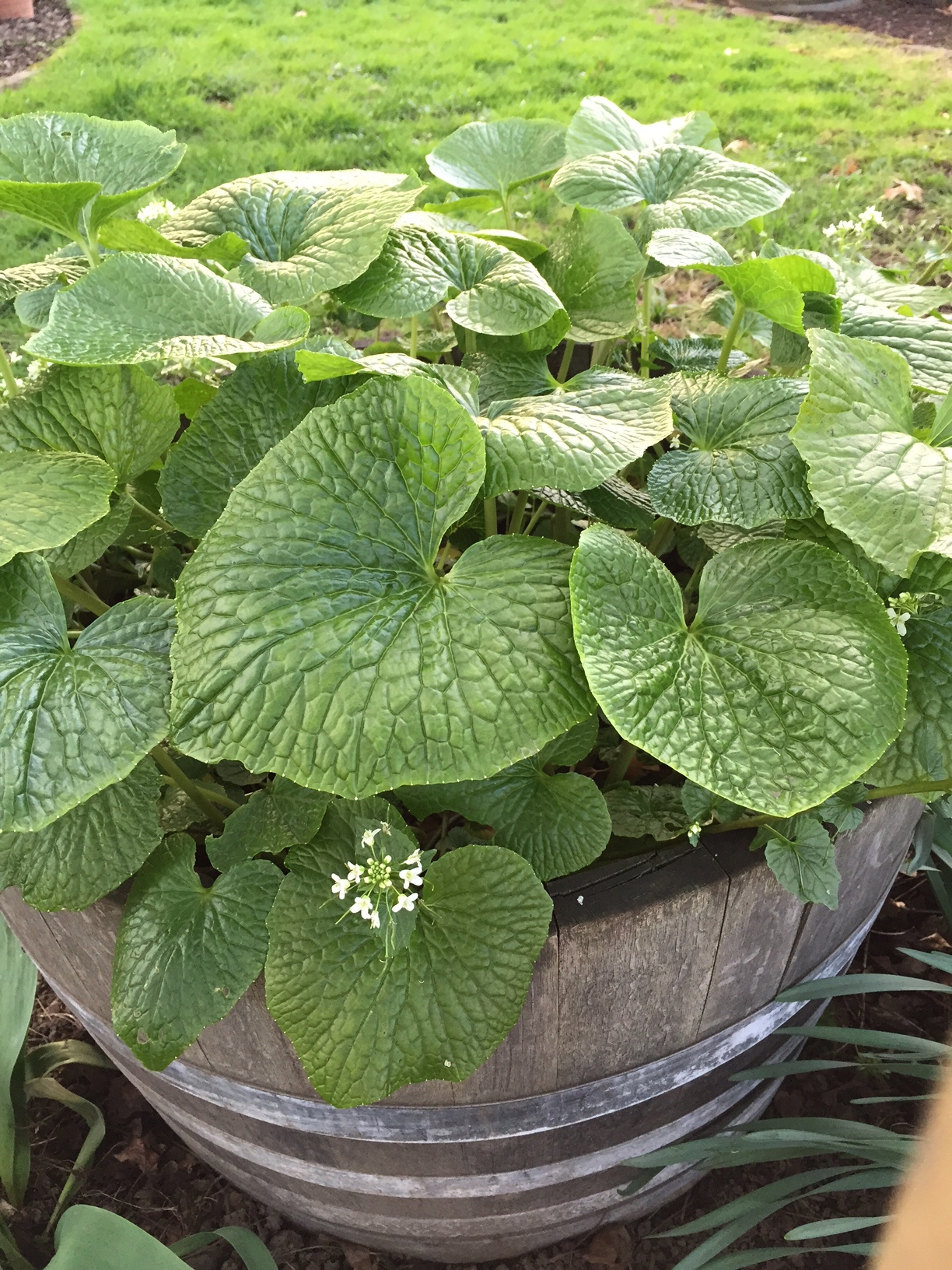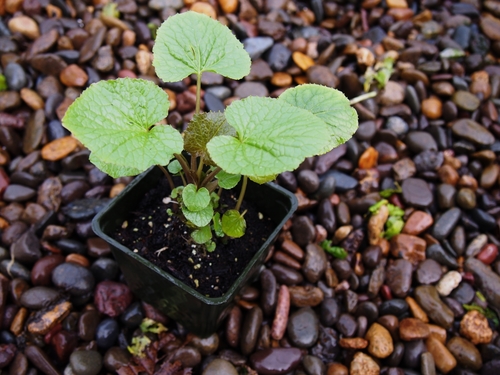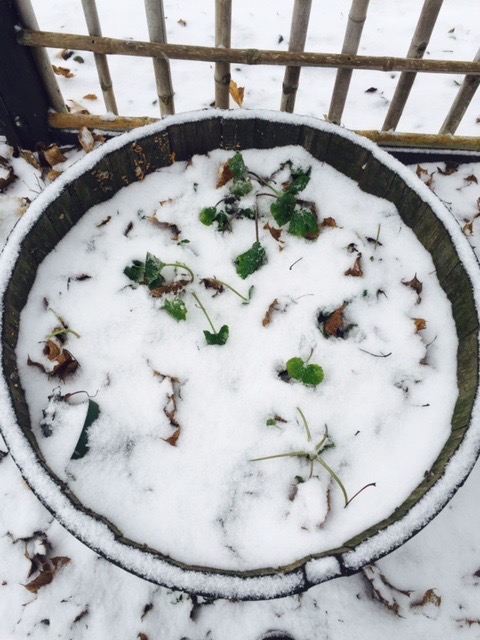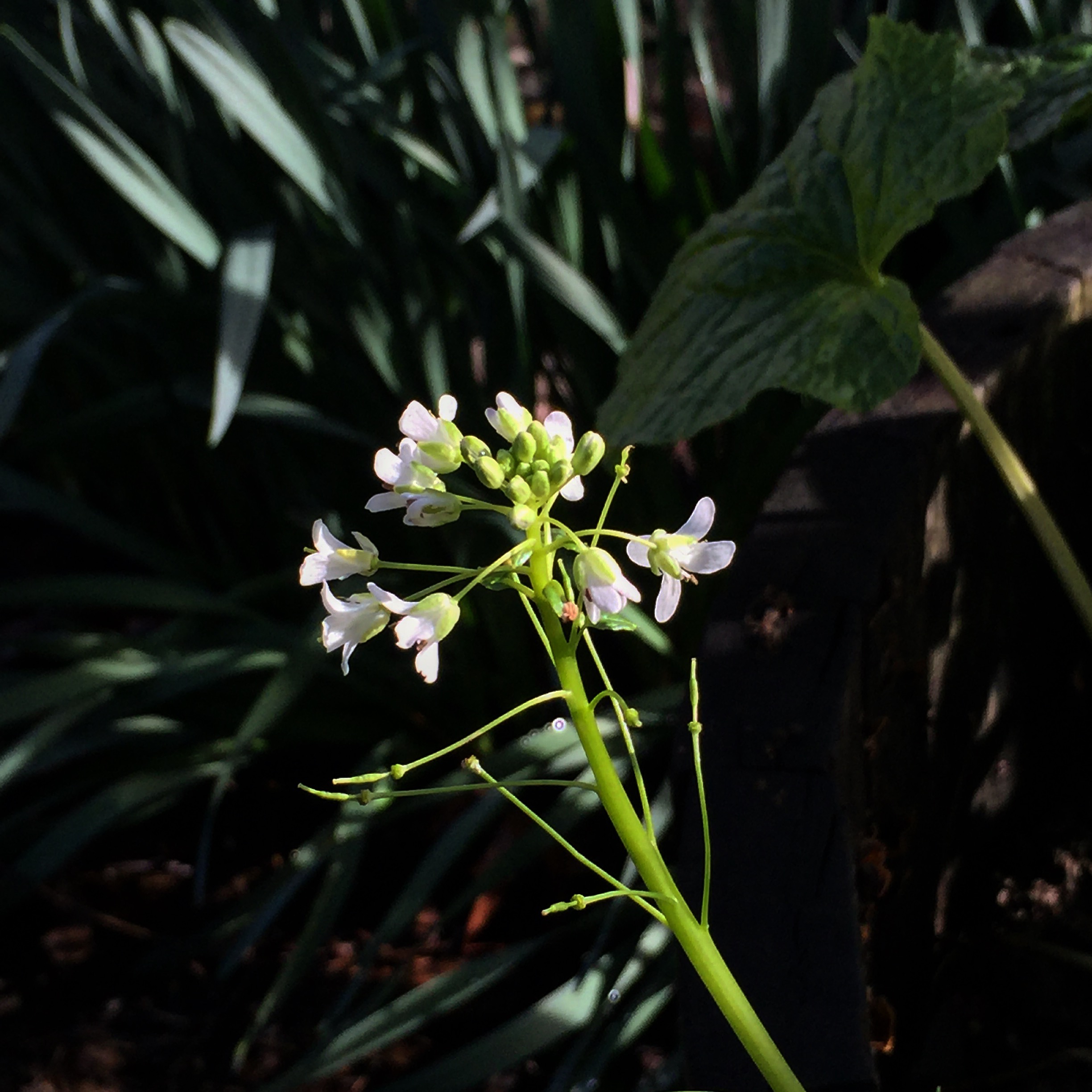We sell PLANT starts for your garden.
Have a shady spot in your garden? Want year-round greens to eat straight from your garden? Then plant wasabi! Wasabi can grow in everybody's garden - for most of the year. If it get below freezing in your area you will need to move or protect the plants during that time. Our website contains many anecdotes and photos of wasabi in the garden. Plant starts can be planted year-round and should grow continuously (.e.g an autumn-planted start can grow through the winter). In fact, we prefer Autumn and early late Winter/early Spring planting. As these plants grow year-round and are shade-loving they should establish quite well off-season. Please see our website for updates and more information (and make sure to sign up for our email newsletter). Please see the blog post titled: "Customer Appreciation Day" to see customer plant growing examples.
If you plant in the summer and the plants are slow to take, be patient. They need temps below 80dF to thrive. If temps are over 80dF, the plants will simply stop growing and wait for more appropriate conditions. Please do not overwater your plants. See the here for guidance.
The leaves, stems and flowers of garden-grown wasabi plants are perfectly edible. Wasabi is a brassica. So, like kale, the leaves and stems on the side can be removed / snipped off and eaten while the plant will grow from the top (apical meristem). The examples shown on this page were grown in the Willamette Valley in Oregon (Plant Hardiness Zone 8a.), not on the Oregon Coast where the Oregon Coast Wasabi Farm is located. We wanted to show the plants in an environment that was hotter and colder than wasabi prefers, with no special treatment. Hot and dry conditions in the summer and cold in the winter (relative to the Oregon Coast) to test the plants' response. They were planted in September, 2014 and the foliage shown is in March 2015. They were grown in well-drained soil with approximately 30% gravel and the remainder soil and compost. A bit of organic vegetable fertilizer was applied once per year. They endured an ice storm in November 2014 and snow in December 2015.
We sell wasabi plant starts (synonym: seedling). These starts are the very same starts that wasabi growers use to propagate commercial wasabi. From even the smallest plant start, a wasabi plant can grow. As long as there is an apical maristem, the plant can grow. The plant starts does not need to have roots, stems or leaves to grow into a full plant.
The plant starts are shipped with the stems and leaves trimmed away as bare root because the plants are healthier and shipping costs are decreased. The plants are quite adept at transplanting and regrowing leaves and stems. In fact, we trim the leaves and stems off all our commercially-planted plantlets for the same reason we trim them for our customers: the heavy and long stems and leaves can pull the plant over on its side before its roots are established. The plant will still send out roots, but it will grow faster when upright. See photos on this page for examples of a trimmed offshoot.
Plant starts are sold bare root. Shipping and associated shock are not a problem. The plant starts can be perfectly healthy out of the ground for months (although we ship to order and they are shipped freshly-harvested). There is no need to ship them with heavy pot and soil which is expensive to ship and totally unnecessary. The plant uses the rhizome as food / nutrient storage and the roots and stems will grow from the rhizome.
We currently sell only daruma variety plant starts.






Planting conditions:
Generally, wasabi plants prefer exceptionally low-light conditions, and well-drained soil. We like to use a 50:50 mix of potting soil to perlite. Plant in full shade year or filtered sun. Additionally, if the ambient air temperature surpasses 80dF, the plants will stop growing and likely wilt. If this occurs, do not compost the plants; they are only waiting for the temperatures to drop again. They should regrow once the temperatures drop again in the Autumn.
Full Shade - all year. Truly. Even in February sun, the leaves will wilt. Full shade. All year. Leaves will brown into a bronze color if they are getting too much sun. If so, transplant. These plants transplant very well.
In the summer, water when the soil has dried out. Do NOT water every day unless the plant need it. Really. The stems may droop a bit and the leaves may wilt. Water the next day and they'll straighten out again overnight.
In the winter, protect the plants from below freezing conditions. Wasabi is a perennial plant that cannot withstand below freezing temperatures. If the temperatures drop below freezing wrap your plants in insulating materials or move to a protected area.
Nutrients: Use any good quality organic vegetable fertilizer. The plants suffer very little shock.
Also note that the plant will only grow a rhizome if it is in perfect conditions. If in imperfect conditions, the offshoot should still produce petioles and leaves and flower in the spring. The petioles and leaves are edible - as are the flowers.
We have other anecdotes, photos and growing examples on our website.
